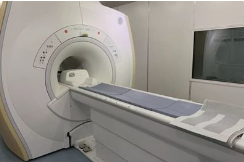Rufen Sie uns 24/7 an
+86 130 5991 3207Senden Sie uns Post
info@msfoam.com
Antistatischer Schaumstoff für Display-Abstandshalter
Huzhou Meishuo bietet antistatisches PE-Schaumstoffmaterial für elektronische Verpackungen, einschließlich PE-Schaumstoff, der alle Anforderungen des elektronischen Verpackungsmaterials an den Oberflächenwiderstand erfüllt und 10^3 bis 10^11 Ω erreicht.
ESD-Anwendungsszenarien und spezielle Leistungsindikatoren, Parameteranforderungen und Prozesse, die mit dem Anwendungsszenario für dieses Produkt verbunden sind:

Physikalische Eigenschaften:
| Leistungsparameter | Typischer Wert/Bereich | Test Standard | Chip Packaging Anpassungsfähigkeit Beschreibung |
|---|---|---|---|
| Dichte | 60-120 kg/m³ | ISO 845 | Hohe Dichte (≥80kg/m³) verbessert die Druckfestigkeit |
| Dicke | 0,5-5,0 mm | ASTM D374 | 1-2 mm werden üblicherweise für Chipschalen verwendet; 3-5 mm für Versandkartons |
| Oberflächenwiderstand | 10⁶~10⁹ Ω | ANSI/ESD S11.11 | Elektrostatisch ableitende Zone (verhindert statische Aufladung) |
| Volumenwiderstand | 10³~10⁶ Ω-cm | ASTM D257 | Gleichmäßige Leitfähigkeit zur Verhinderung örtlich begrenzter Entladungen |
| Zugfestigkeit | 1,5-3,5 MPa | ISO 527 | Verhindert das Einreißen bei der Handhabung |
| Druckverformungsrest | ≤10% (50% Kompression, 22h) | ISO 1856 | Ausgezeichnete Erholung nach Langzeitkompression |
| Temperaturbeständigkeit | -50℃~+105℃ | ASTM D746 | Hält Chip-Reflow-Temperaturen stand (125℃ kurzfristig) |
| Sauberkeit | NAS 1638 Klasse 5 | IEST-STD-CC1246D | Kein Partikelabwurf zum Schutz der Spanflächen |
| VOC-Emissionen | TVOC ≤50μg/m³ | GB/T 29899 | Vermeidet die Kontamination von Chip-Bonding-Bereichen |
| Umweltfreundlichkeit | Halogenfrei, RoHS/REACH-konform | IEC 62321 | Erfüllt die Umweltstandards der Elektronikindustrie |
Herstellungsprozess: Kleben

Physikalische Eigenschaften:
| Leistungsparameter | Typischer Wert/Bereich | Test Standard | Anpassungsfähigkeit medizinischer Geräte Beschreibung |
|---|---|---|---|
| Dichte | 80-150 kg/m³ | ISO 845 | Hohe Dichte (≥100kg/m³) gewährleistet strukturelle Stabilität |
| Dicke | 3-20 mm | ASTM D374 | Üblicherweise 10-15 mm für Dichtungen von MRT-Geräten |
| Oberflächenwiderstand | 10⁶~10⁹ Ω | ANSI/ESD S11.11 | Elektrostatische Ableitung zur Vermeidung von Störungen bei Präzisionssensoren |
| Volumenwiderstand | 10³~10⁶ Ω-cm | ASTM D257 | Gleichmäßige Leitfähigkeit zur Vermeidung örtlich begrenzter Entladungen |
| Zugfestigkeit | 2,0-4,0 MPa | ISO 527 | Widerstandsfähig gegen mechanische Beanspruchung, verhindert Einreißen |
| Druckverformungsrest | ≤8% (50% Kompression, 22h) | ISO 1856 | Keine Verformung nach langfristigem Gebrauch |
| Temperaturbeständigkeit | -60℃~+120℃ | ASTM D746 | Geeignet für MRI-Umgebungen mit Flüssigstickstoffkühlung |
| Wirksamkeit der Abschirmung | ≥30dB (1GHz) | ASTM D4935 | Unterdrückt elektromagnetische Störungen (EMI) |
| Biokompatibilität | ISO 10993-5/10 | USP Klasse VI | Nicht zytotoxisch/nicht hautreizend |
| Sauberkeit | ISO 14644-1 Klasse 5 | IEST-STD-CC1246D | Keine Partikelfreisetzung, erfüllt Reinraumanforderungen |
Herstellungsverfahren: Kleben (Leitende Modifikation)

Physikalische Eigenschaften:
| Leistungsindikator | Typischer Wert/Bereich | Test Standard |
|---|---|---|
| Dichte | 30-120 kg/m³ (45-80 üblicherweise verwendet) | ISO 845 |
| Dicke | 0,5-10 mm (üblicherweise 2-5 mm) | ISO 9073-2 |
| Oberflächenwiderstand | 10⁶-10⁹ Ω/sq (ESD-Klasse) | ASTM D257 |
| Volumenwiderstand | 10⁶-10⁹ Ω-cm | ASTM D257 |
| Druckfestigkeit | 10-50 kPa (25% Druckverformung) | ISO 3386 |
| Rückprallrate | ≥70% | ASTM D3574 |
| Schwerentflammbarkeit | UL94 HF-1/V0 (wahlweise) | UL 94 |
| Temperatur-Widerstandsbereich | -40℃ ~ +120℃ (150℃ für kurzfristig) | ISO 6722 |
| Wärmeleitfähigkeit | 0,04-0,06 W/(m-K) | ASTM C518 |
| Wasserabsorption | <1% (24 Stunden Eintauchen) | ASTM D570 |
| Reißfestigkeit | 3-10 N/mm | ASTM D624 |
Herstellungsprozess: Kleben

Physikalische Eigenschaften:
| Leistungsindikator | Typischer Wert/Bereich | Test Standard | Besondere Anforderungen an die Luft- und Raumfahrt |
|---|---|---|---|
| Dichte | 60-150 kg/m³ (80-120 üblicherweise verwendet) | ISO 845 | Hohe Dichte gewährleistet Schlagfestigkeit und strukturelle Stabilität |
| Dicke | 0,2-15 mm (üblicherweise 1-5 mm) | ISO 9073-2 | Ultradünn (<1mm) für präzise Instrumentenabstände |
| Oberflächenwiderstand | 10⁴-10⁹ Ω/sq (strengere Kontrolle) | ASTM D257 | Notwendigkeit zur Vermeidung elektromagnetischer Störungen (EMI-Abschirmung optional) |
| Volumenwiderstand | 10⁴-10⁹ Ω-cm | ASTM D257 | Höhere Stabilitätsanforderungen in Umgebungen mit niedriger Luftfeuchtigkeit |
| Druckfestigkeit | 50-200 kPa (25% Druckverformung) | ISO 3386 | Muss hochfrequenten Vibrationen und G-Kräften standhalten |
| Rückprallrate | ≥85% | ASTM D3574 | Strengere Anforderungen an die Wiederherstellung nach Langzeitkompression |
| Schwerentflammbarkeit | UL94 V0 / FAR 25.853 | UL 94 / FAA-Normen | Muss den Test auf toxische Dämpfe bestehen (geringe Toxizität) |
| Temperatur-Widerstandsbereich | -70℃ ~ +180℃ (200℃ für kurzfristig) | RTCA DO-160 | Verträglich mit extremer Kälte (große Höhe) und hohen Temperaturen beim Wiedereintritt |
| Vakuum Ausgasung | TML<1%, CVCM<0.1% | ASTM E595 | Verhinderung der Kontamination optischer Komponenten von Raumfahrzeugen |
| Strahlungsresistenz | Beständig gegen UV/γ-Strahlen (1000 Stunden lang keine Rissbildung) | MIL-STD-810G | Unverzichtbar für Satelliten und Weltraumausrüstung |
| Wärmeleitfähigkeit | 0,03-0,05 W/(m-K) | ASTM C518 | Thermisch verbesserte Typen für einige Szenarien erforderlich |
| Chemische Beständigkeit | Beständig gegen Hydrauliköl, Raketentreibstoff-Oxidationsmittel | ASTM D471 | Beständig gegen Hydrazine, Stickstofftetroxid usw. |
Herstellungsverfahren: Stanzen, Kleben, etc.









